Why Is It Important To Know Your Breast Density?
In today’s post, we will discuss in Q&A format the importance of knowing your breast density.
Q. I had a mammogram recently and was told that I have dense breast tissue. What does that mean?
A. Breasts are made up of fat and non-fatty glandular and connective breast tissue. Some women have more fat than breast tissue, while others have more breast tissue than fat. Breasts that have higher proportion of the glandular tissue are described as “dense”.
Q. Is it unusual to have dense breasts and can I tell by feel if my breasts are dense?
A. Approximately 40 percent of American women have dense breasts. Breast density is not evident by feel or appearance. The only way to determine whether breasts have dense tissue is by evaluating a mammogram.
Q. Who determines whether or not I have dense breasts?
A. The radiologist who looks at your mammogram classifies breast composition into one of four categories of increasing density. The four types, which are discussed in our “What is Breast Density?” post, are predominantly fatty, scattered fibroglandular tissue, heterogeneously dense or extremely dense.
Q. Will I always have dense breasts?
A. Dense breast tissue is a physical attribute like other features of your body. You cannot actively modify density, but it can change as a result of age, hormone levels and menopause. As women age, their breasts may become less dense.
Q. Why does it matter if my breasts are dense?
A. Regardless of size or shape, women who have dense breasts have a greater risk of developing breast cancer than women with fatty breasts. According to the National Library of Medicine, 71% of breast cancers occur in dense breasts. Dense tissue may also obscure underlying abnormality, making it harder to detect early cancer.
Q. How can women be sure they will be told if they have dense breasts?
A. Recognizing the importance of early detection of breast cancer and the fact that women with dense breasts have a higher risk for developing it, several states have passed legislation requiring mammography services to inform patients if dense breast tissue is seen during an exam. The intent of the law is to empower women to discuss additional screening options with their physicians.
Q. Will a tumor show up in a mammogram of a dense breast?
A. Detecting a tumor in a mammogram of dense breasts can be difficult because dense breast tissue looks white and masses or lumps also appear white. That’s why a cancer can easily hide in a background of dense tissue.
Q. Is there another test that can detect cancer in dense breasts?
A. Ultrasound, a non-invasive method that uses high-frequency sound waves, can help identify masses that are hard to see on a mammogram. Ultrasound can increase detection by revealing certain cancers that do not show up in 2D mammography. For further clarity, a physician may suggest a 3D Mammogram to determine if there is any cancerous growth.
Q. Should I skip having a mammography and just go for an ultrasound screening?
A. No. Mammography is the most sensitive modality to detect calcifications (deposits of calcium that can be seen on a mammogram) that are sometimes produced by early breast cancers. Also, comparing a mammogram with a previous year’s exam allows small changes to be seen. If you have dense breasts, having both a mammography and an ultrasound screening will provide a more complete evaluation.

What Are My Screening Options?
Early detection is key in decreasing your risk in developing cancer. Yearly mammograms are important but in the case where you have dense breasts, additional screening may be necessary. Discuss your options with your physician to determine the appropriate screening method. Some of the options at Capitol Imaging Services are Conventional 2D Screenings, 3D Mammograms, and Breast Ultrasounds.
- Conventional 2D – is an x-ray of the breast and is done for screening or diagnostic purposes.
- 3D Mammogram – multiple low-dose images known as “slices” of the breast are acquired at different angles.
- Breast MRI – captures detailed images of the inside of the breast that cannot be obtained by the other imaging techniques
- Breast Ultrasounds – uses sound waves and their echoes to make computer pictures of the inside of the breast.
Please visit our website’s section on mammography to learn more about your screening options and to find the CIS center that offers breast cancer screening near you. Schedule your appointment with Capitol Imaging Services and find out why we are Doctor Trusted and Patient Preferred.


